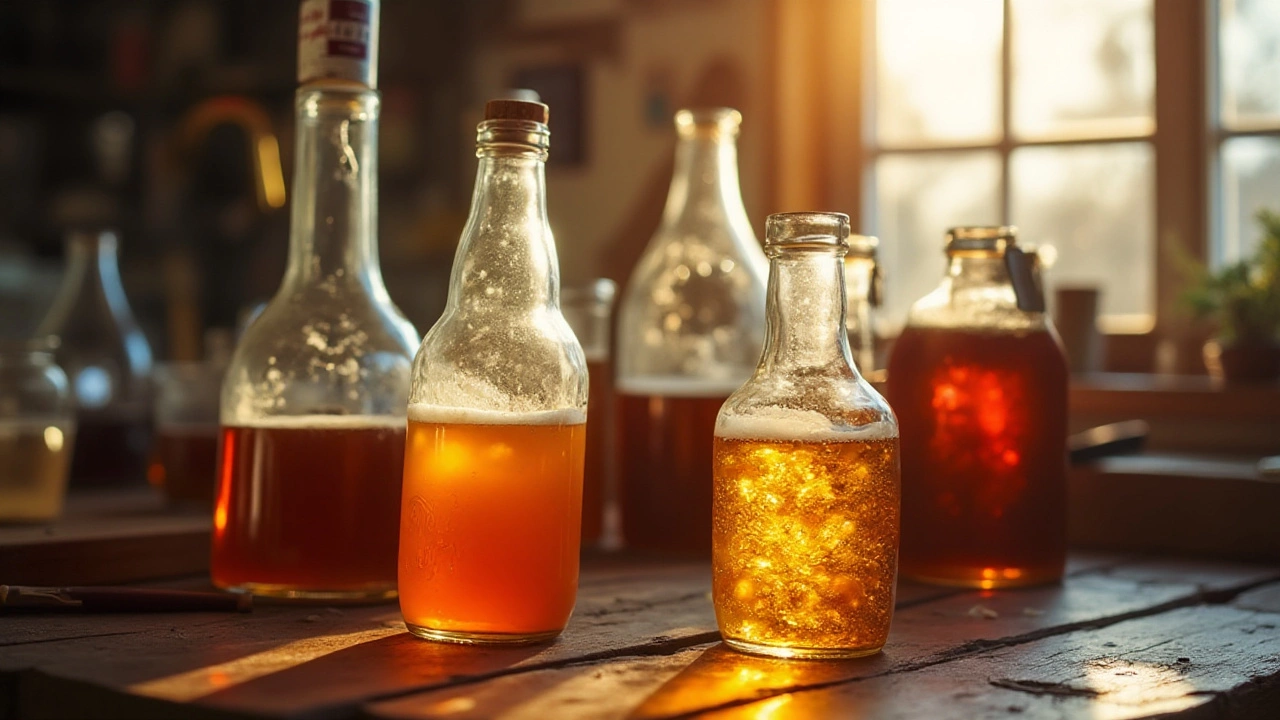Beer Strength Explained: What You Need to Know
Ever wondered why some beers feel light and easy while others hit you with a punch? The secret is the beer's strength, usually measured as ABV (Alcohol By Volume). ABV tells you how much alcohol is in the drink, and it’s the quickest way to gauge how strong a beer will be. Knowing the ABV helps you pick a brew that matches your mood, your food, or even your ability to stay awake.
Types of Beer Strength: From Light to Mighty
Most everyday lagers sit around 4‑5% ABV – they’re called "session beers" because you can enjoy a few without getting too buzzed. If you prefer a bit more body, try a pale ale or a wheat beer at 5‑6% ABV; they give a richer flavor but still feel manageable. On the stronger side, IPAs often hit 6‑7% ABV, delivering bold hops and a noticeable buzz. Then there are the heavy hitters – double IPAs, imperial stouts, and barleywines – which can push 8‑12% ABV or higher. These are best sipped slowly, maybe with dessert.
Choosing the Right Strength for Your Situation
If you’re heading to a barbecue, a 4‑5% lager lets you chat and grill without missing a beat. For a night out with friends who love hop‑forward flavors, a 6‑7% IPA adds excitement without overdoing it. Planning a cozy evening by the fire? An 8‑10% imperial stout pairs perfectly with chocolate or cheese, and its higher ABV keeps you warm.
Consider your tolerance, too. A higher ABV beer will affect you faster than a lighter one, even if the serving size is the same. If you’re new to craft beers, start low and work your way up – you’ll notice how different strengths change the taste and the feeling.
Health‑wise, lower‑ABV beers tend to have fewer calories, but it also depends on the style. Some strong beers are surprisingly light on calories because they use fewer carbs. Check the label for both ABV and calorie info if you’re watching numbers.
When you’re tasting a new brew, pay attention to how the alcohol feels. A smooth, well‑balanced strong beer will let the flavor shine, while a harsh, overly boozy one will taste hot. Swirl the glass, take a small sip, let it coat your palate, and note if the alcohol overwhelms the other flavors.
Lastly, store your beers right. Stronger beers often benefit from a cooler, darker spot, which helps preserve the complex flavors. Light beers are more forgiving but still enjoy a tidy fridge.
Now you’ve got the basics: ABV tells you strength, different ranges suit different moments, and a little practice makes picking the perfect beer a breeze. So next time you’re at the store or a taproom, glance at the label, match the ABV to your plan, and enjoy the brew you’ve chosen.
Delve into the science of beer fermentation to discover how the duration influences the strength and flavor of your homebrew. This essential guide for homebrewers explores the role of yeast, alcohol content, and factors impacting fermentation. Learn how to adjust your brewing techniques for optimal results and create flavorful and robust beers. Uncover exciting facts and expert tips that can elevate your brewing game to the next level.
View Details

